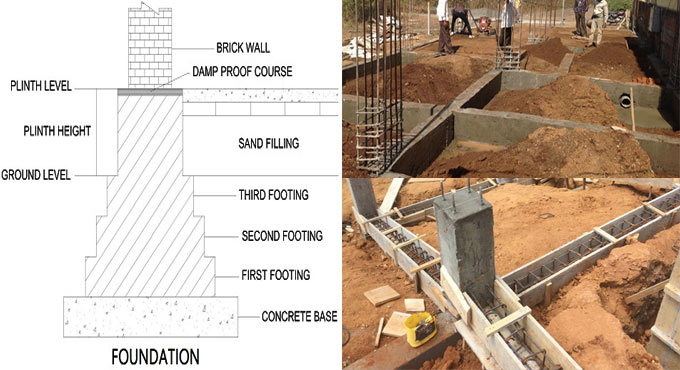
Variation among Tie Beam and Plinth Beam
In civil engineering term, plinth beam means a reinforced concrete beam in a framed structure that is set among the wall and foundation or over, sometimes underneath ground level. Sometimes, it is also built up on the DPC. It bears the weight of the wall that is constructed on top of it. Plinth beams also minimize the length of the columns in that way lessening their effective length and thinness.
Types of Plinth Beam: In fact, the plinth beam stands for a band beam that is it goes over the boundary of the structure at plinth level and is typically reinforced with least 2 main rebars at top and 2 rebars at bottom having minimum diameter of 10 mm.
To get rid of shrinkage shear failures in plinth beam, stirrups of minimum #3 are applied at 150 mm distance.
Purpose of Plinth Beam:
a. The main purpose of the plinth beam is to avoid the extension of crack from foundation into the wall.
b. Plinth beam disperses the load of wall to the foundation to safeguard the wall from the long cracks.
c. Plinth beam can also avoid the building from the seepage
d. Plinth beam attaches all the columns.
e. Plinth beam can circumvent differential settlement.
f. Apply 12mm dia of steel at the bottom of the plinth beam.
Tie Beam: Tie beam is situated over the ground floor to relate column and footing. It is a horizontal beam that associates two rafters in a roof or roof truss.
It is mostly found in roof truss and at plinth level. It does not carry any floor loads. It only functions as length breaker for columns where the height of the floor is normally far above the ground.
The purpose of tie beam is to transmit the rafter's load to the column of the structure.
In civil engineering term, a tie beam refers to a structural member that bears the load and transfers the load to other members as well as connects to gather various structural members like Column, beam footing and wall frames.
Purpose of Tie Beam: Tie beam is utilized for the column. If the height of the column surpasses 4 to 5 meter, then the tie beam is set up for structure. If the height of the column is under 4 meter than the tie beam is not recommended in building structure.
Tie beams function as a length breaker for the columns to minimize their effective length as well as slenderness ratio provided the roof height is bit more.
a. Tie beam bears axial compression.
b. Tie beam transmits the rafter?s load to the column.
c. Tie beam resists column from buckling.
d. Variation among tie beam & plinth beam
The primary deviation among a tie beam and plinth beam is the ?elevation? at which the beams are arranged. The plinth beam is set up at plinth level whereas tie beam is set up somewhere over plinth level and floor level.


